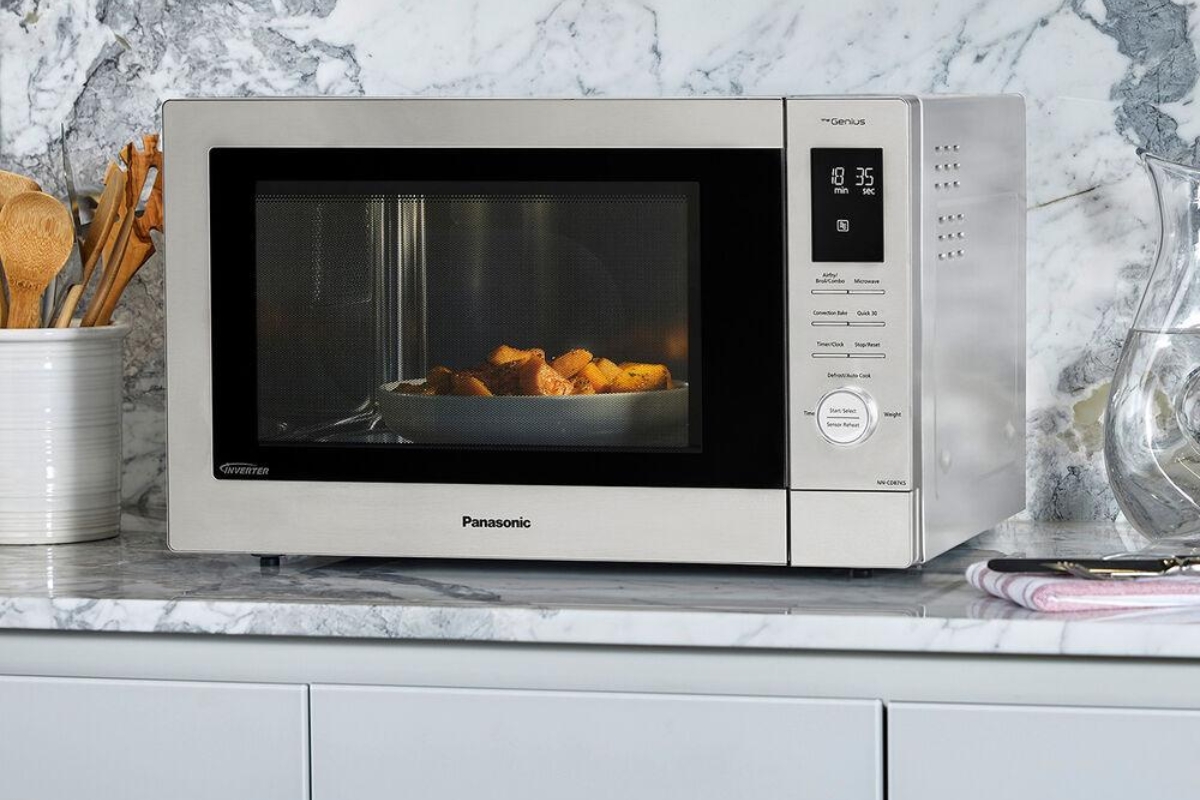For a long time, my oven cleaning was just about what I could see inside. I wiped the glass. I scrubbed the racks. But I completely ignored the fan and vents in the back. At first, everything seemed fine. Then I started noticing uneven baking and strange smells. That is when I realized the problem was not just what I could see, but what I had overlooked.
Oven fans and vents collect fine grease and dust over time. If you bake or roast often, that buildup gets worse with every use. When these parts get clogged, the oven can overheat or circulate hot air unevenly. Your cookies may burn on one side while the other stays undercooked. In some cases, the fan starts making strange noises from the strain.
Keeping these hidden parts clean helps the oven do its job properly. It also keeps the air in your kitchen fresher and extends the life of the appliance.
Understanding Your Oven’s Ventilation System
Before I started cleaning, I took a moment to learn how my oven pushes air around. Not all ovens are built the same, but most have a few common features.
Convection ovens use a fan, usually located at the back of the oven wall. This fan helps circulate hot air so food cooks more evenly. Traditional ovens might not have a fan but do have vents near the back or top to help with airflow.
The vents help move heat out and prevent the oven from getting too hot inside. Over time, they get coated with fine layers of grease or dust from cooking.
If you notice your oven cooking slower than usual, if you smell something burnt even when the oven is empty, or if the fan makes unusual sounds, those are signs it is time to check the fan and vents.
Safety Comes First
Before I clean any part of the fan or vent, I always make sure the oven is off. For electric ovens, I unplug it from the wall. If it is a built-in model, I switch off the circuit breaker to stop the power.
I never clean the fan or vents while the oven is warm. I wait until it is fully cooled. Touching any part while it is still warm is not only unsafe but can also damage delicate surfaces.
It is also important not to spray liquid directly onto the fan motor or into any electrical opening. I use damp cloths and gentle tools to keep everything controlled and safe.
Tools and Cleaners I Use for This Job
To clean oven fans and vents, I use a few simple tools that are safe for these sensitive parts.
I start with soft brushes or an old toothbrush. These help reach around fan blades or into narrow vent grooves without scratching anything. For wiping, I use microfiber cloths that hold moisture without dripping. They are great for collecting grease and dust without leaving fibers behind.
For cleaning solution, I use a paste of baking soda and water when dealing with greasy buildup. I also keep white vinegar in a spray bottle to help lift dirt and freshen the area.
If the vents are dusty, I sometimes use a short burst of compressed air. This helps remove loose particles from corners I cannot reach. I never use water directly on any part connected to wiring or power. Moisture near electronics is always a risk, even when the oven is off.
How I Clean Oven Fans Without Taking Them Apart
Most ovens do not require you to disassemble the fan to clean it. I have found that basic access is enough to keep things clean and working well.
Remove oven racks and rear cover if accessible
Start by taking out the racks to create more space. Some ovens have a removable rear panel that covers the fan. If yours does, unscrew it gently and set it aside. Always check your manual first to be sure it is safe to remove.
Use a brush to remove dust or loose grease
I take a soft brush or an old toothbrush and sweep gently around the fan blades. This helps loosen dry dust and any light buildup before I apply a cleaner.
Wipe fan blades gently with a damp cloth
With a cloth dampened in warm water and vinegar, I carefully wipe each blade. I hold the fan still with one hand and clean with the other. The goal is to clean without bending or moving any parts.
Avoid soaking or applying too much pressure
I never soak the cloth or let liquid drip into the fan base. Moisture near the fan motor is dangerous and can cause damage. A slightly damp cloth is enough when paired with gentle pressure.
Cleaning Oven Vents Without Damage
Oven vents tend to hide grime in narrow slots. Cleaning them safely requires patience and the right tools.
Locate vent slots and wipe exterior first
I find the vent slots, usually located near the top or back of the oven. I start by wiping the outer surface with a damp microfiber cloth to remove surface dust.
Spray vinegar on cloth and press into vent grooves
Instead of spraying directly onto the oven, I spray vinegar onto the cloth. Then I press the cloth into the grooves, moving gently to lift grease and residue without pushing it further inside.
Use brush or compressed air to reach tight spaces
For narrow gaps, I use a toothbrush to sweep away dust or a quick burst of compressed air to loosen hidden debris. I work slowly and avoid forcing anything into the vents.
Dry completely before using the oven again
Once everything is clean, I dry the area thoroughly with a clean towel. I always wait until the fan and vents are completely dry before turning the oven back on.
How Often to Clean Fans and Vents
Keeping the fan and vents clean does not require frequent work if you stay ahead of buildup.
Recommended schedule based on oven use
If you use your oven two or three times a week, cleaning the fan and vents every three to four months works well. For daily cooking, every two months may be better.
When to clean more often
If you cook foods that splatter or create a lot of steam, like roasts or casseroles, you may need to clean more often. I also increase my cleaning schedule during holidays or after multiple large meals.
Warning signs
Pay attention to changes in oven performance. If you smell something odd every time you turn the oven on, hear unusual fan noises, or notice food cooking unevenly, the fan or vents may be clogged.
FAQs
Can I clean the oven fan without removing the back panel?
Yes, in most ovens you can clean the fan without removing anything. Just take out the racks and use a brush or damp cloth to gently wipe the blades you can reach. If your oven allows safe access to the rear panel, removing it gives better results, but it is not always necessary.
Is it safe to spray cleaner directly on the fan or vent?
No, never spray cleaner directly on the fan or into the vents. Spray it onto a cloth instead, then apply carefully. Direct spraying can push liquid into electrical parts, which can cause damage or create a safety risk.
What causes oven fans to make a loud noise?
Grease buildup or trapped debris around the fan blades can cause noise. When the fan struggles to spin evenly, it makes a whirring or rattling sound. Cleaning the fan blades and the area around them often solves the issue.
Can I use a vacuum to clean oven vents?
Yes, but only if your vacuum has a soft brush attachment. Avoid using strong suction near the motor or electrical parts. I prefer a small handheld vacuum or compressed air to safely clear dust from vent slots.
How do I know if the fan or vents are clogged?
Common signs include uneven cooking, strange smells when the oven heats up, and slower preheating times. In some cases, the oven might feel hotter than usual near the back panel. These are clues that airflow is being blocked.
Do all ovens have fans and vents?
Not all ovens have fans. Convection ovens do, but standard models often rely on passive vents for airflow. Even if there is no fan, those vent openings still need cleaning every few months to avoid grease buildup.






